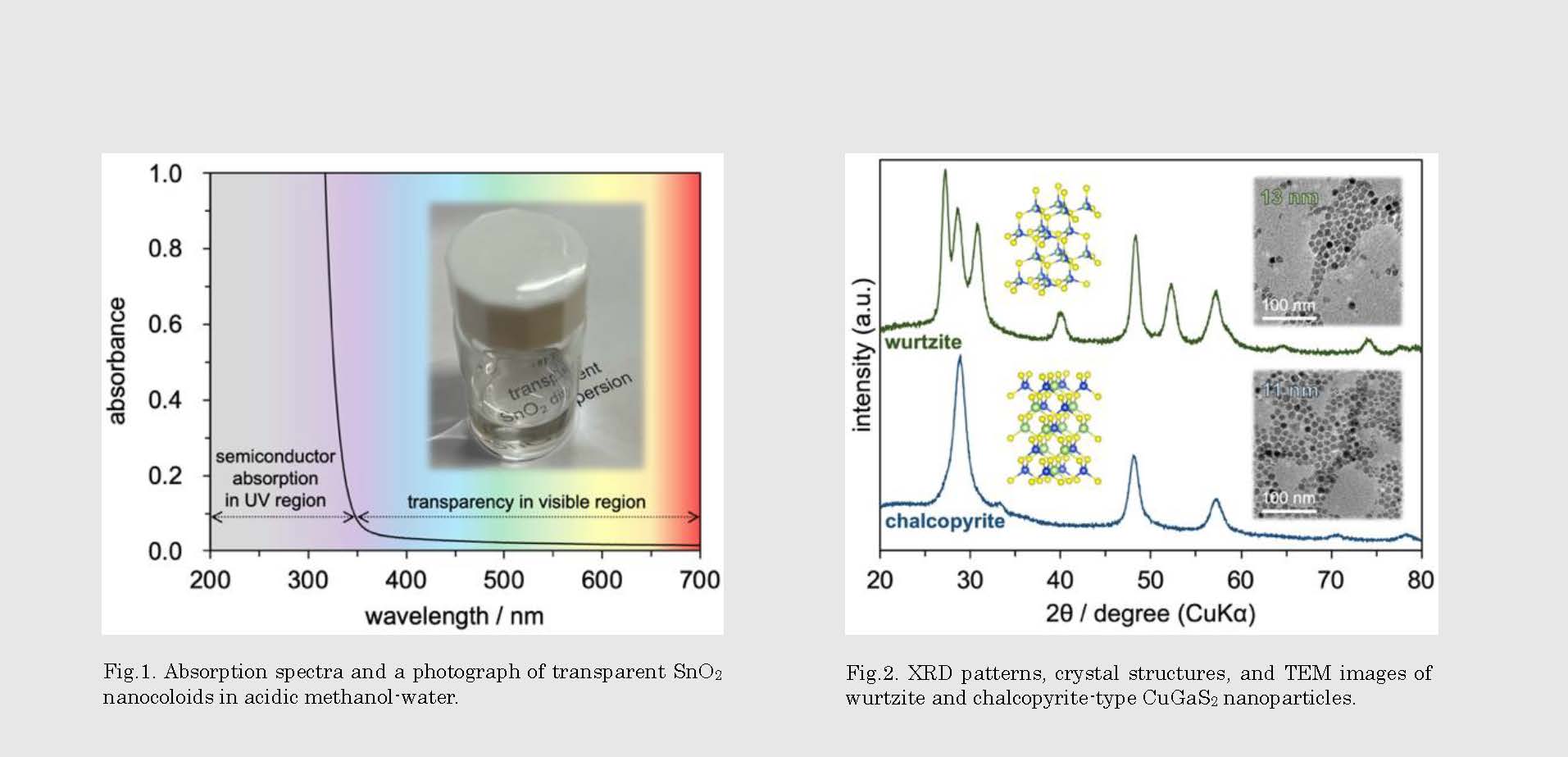
SANKEN
The University of Osaka
大阪大学
産業科学研究所

LAST UPDATE 2025/05/16
-
研究者氏名
Researcher Name佐野奎斗 Keito SANO
助教 Assistant Professor -
所属
Affiliation大阪大学 産業科学研究所
金属有機融合材料研究分野
SANKEN, The University of Osaka
Department of Transcendent Materials Chemistry -
研究キーワード
Research Keywordsナノ粒子
カルコゲナイド
太陽光エネルギー変換
Nanoparticle
Chalcogenide
Solar energy conversion
- 研究テーマ
Research Subject -
半導体カルコゲナイドナノ粒子の精密合成と太陽光エネルギー変換への展開
Precision Synthesis of Semiconductor Chalcogenide Nanoparticles Towards Solar Energy Conversion
研究の背景 Background of the Research
太陽光エネルギーを電気エネルギーや化学エネルギーへ変換する太陽電池や人工光合成はエネルギー・環境問題の解決に大いに貢献し得る.太陽光は紫外から赤外にわたる幅広い波長域の光から構成されており,これらをいかに有効利用するかが効率のよいエネルギー変換の鍵となる.半導体ナノ粒子は,その種類に応じて紫外・可視域で主にバンド間遷移に由来する光吸収を示すだけでなく,特定のナノ粒子においては赤外域で自由電子の集団振動(局在表面プラズモン共鳴)に基づく光吸収を示すことがわかっており,幅広い波長域の光を吸収する注目すべき材料群である.
Solar energy conversion systems, such as solar cells and artificial photosynthesis, can help address energy and environmental issues. A key theme in achieving efficient energy conversion is harnessing a broad range of sunlight wavelengths. Semiconductor nanoparticles (NPs) are promising candidates as photon absorbers across this wide spectrum; some NPs can absorb infrared light through the collective oscillation of free carriers, a phenomenon known as localized surface plasmon resonance, and they also absorb ultraviolet and visible light through interband transitions.
研究の目標 Research Objective
本研究では,金属とカルコゲン元素(酸素,硫黄など)から構成されるカルコゲナイドナノ粒子の粒径,形状,組成,結晶構造を精密に制御する合成技術の確立,およびそれに基づくナノ粒子の光化学物性の体系的な理解や光エネルギー変換に資する機能性材料への応用を目指す.たとえば,高い透明安定性をもつ酸化チタン・スズ光触媒ナノコロイドの合成(Fig.1)1や,硫化銅を基盤としたプラズモンナノ粒子の結晶構造制御(Fig.2),ポルフィリン/ナノシート複合材料の創生2と可視光応答性光触媒への応用3に成功し,さらなる高機能化と新規材料開発に取り組んでいる.
The author studies the photochemistry of semiconductor chalcogenide nanoparticles (NPs), focusing on how particle size, morphology, chemical composition, and crystal structure influence their photochemical properties, all based on precision synthesis of NPs. Additionally, the author aims to enhance the understanding of solar energy conversion systems. For instance, the preparation of highly transparent nanocolloids of photocatalytic titanium and tin oxides (Fig.1)1,2 and the control of crystal structure in plasmonic copper sulfide-based NPs (Fig.2)3 have all been reported.
研究図Figures

Fig.2. XRD patterns, crystal structures, and TEM images of wurtzite and chalcopyrite-type CuGaS2 nanoparticles.
論文発表 / Publications
1) K. Sano et al., ACS Appl. Mater. Interfaces 2020, 12, 44743-44753. 2) K. Sano et al., J. Phys. Chem. C 2024, 128, 13596-13605. 3) K. Sano et al., ChemRxiv 2025, https://doi.org/10.26434/chemrxiv-2024-xpv5b-v2. 4) K. Sano et al., in review. 5) R. Onishi et al., Bull. Chem. Soc. Jpn. 2021, 94, 937-942.
研究者連絡先 / HP
- sanokeito.sanken
 osaka-u.ac.jp
osaka-u.ac.jp - https://www.sanken.osaka-u.ac.jp/organization/sec/sec02.html